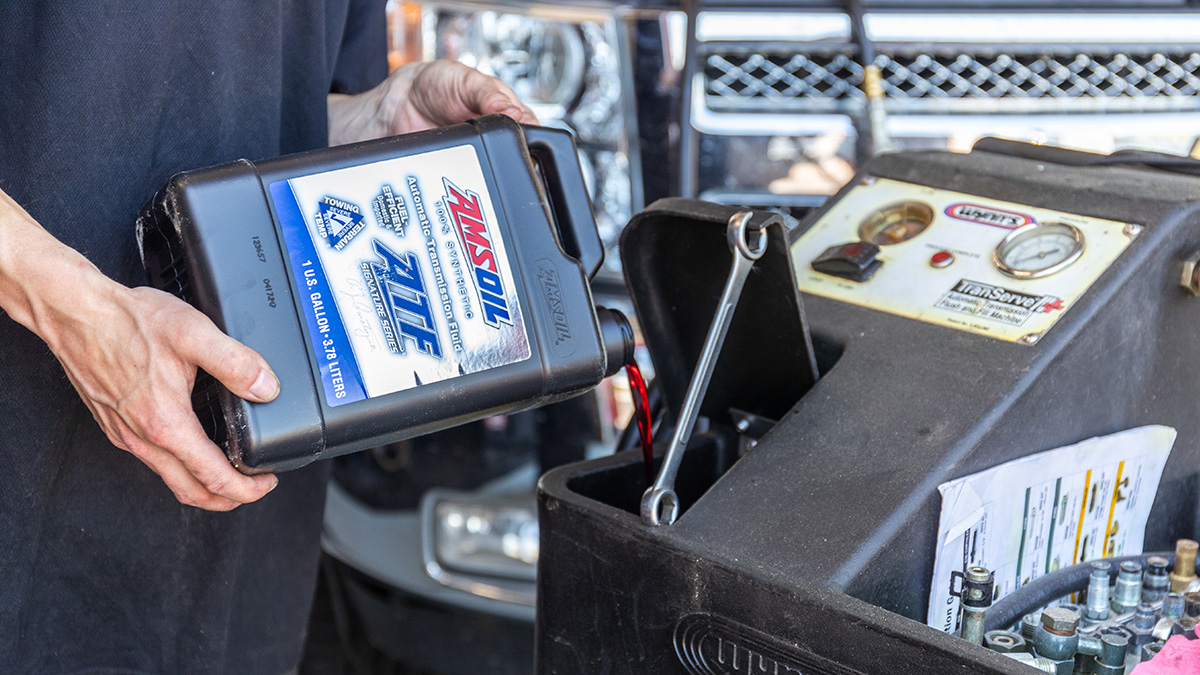How Often Should I Change Transmission Fluid?
How often to change transmission fluid depends on several factors we outline in this post.
Motorists sometimes ask, “How often should I change transmission fluid?” It depends on your vehicle and driving habits. Recommended transmission fluid changes run the gamut from every 30,000 miles (48,000 km) to never. Yeah, that’s right. Here are some tips for determining how often to change transmission fluid.
Change Transmission Fluid: How Often? Check Your Owner’s Manual
Original equipment manufacturer (OEM) recommendations for how often to change automatic transmission fluid cover a wide mileage range, depending on year, make and model.
Plus, if your driving habits are like most motorists and fall under the “severe” designation (towing, hauling, daily short trips less than 10 miles, etc.), many OEMs recommend changing transmission fluid more frequently.
Here are just a few examples to illustrate the disparity among vehicle makes and models.
| Year/Make/Model | Normal Service | Severe Service |
|---|---|---|
| 2021 RAM* 1500 | Never (filled-for-life transmission) | Change if the fluid becomes “contaminated” |
| 2021 Chevy* Silverado* | Never (filled-for-life transmission) | Every 45,000 miles (72,000 km) |
| 2021 Ford* F-150 | 150,000 miles (240,000 km) | 150,000 miles (240,000 km) |
| 2003 Honda* CR-V* | 90,000 miles (145,000 km) | 30,000 miles (48,000 km) |
These differences illustrate the importance of checking the recommendations in your owner’s manual. It’ll provide maintenance recommendations, typically in a table in the back. Many OEMs provide digital owner’s manuals online, so if you’ve lost yours, try a quick search.
A quick word on “filled-for-life” transmissions.
They’re becoming more prevalent as OEMs seek ways to alleviate motorists from unwanted maintenance. They sound like all upside, but it’s important to change fluid in these units, particularly if you tow or haul.
They’re supposed to last the life of the vehicle, but what do you suppose will happen if the transmission fails once the warranty expires? You’re going to get stuck with a hefty repair bill, that’s what. Be proactive and change fluid at least once during its lifetime.

Change Transmission Fluid: How Often? Go By The Book
Start with the recommendations in your owner’s manual.
But, how many of us dutifully follow them down to the mile? But as you know most drivers completely forget about their transmission until it begins to shift hard, jerk hard jerk hesitate. Out of sight, out of mind, right?
Not good, especially if you tow or haul. But the interval does depend on the abuse and the quality of the fluid.
Heat Kills Transmissions
Over time, transmission fluid oxidizes (chemically breaks down). High heat generated from towing and hauling speeds the process.
Fluid that has broken down can cause sludge and varnish to form, which clogs narrow oil passages and contributes to clutch glazing. Soon, your vehicle can begin to shift poorly.
In these cases, wouldn’t it be great to use a transmission fluid formulated with reserve protection against heat in case life gets in the way of recommended maintenance?
Get Reserve Heat Protection For Your Transmission
AMSOIL Signature Series Synthetic Automatic Transmission Fluid’s built-in reserve protection means it lasts for 2X the OEM’s severe-service drain interval. That means you can rest assured your transmission is protected, even if service is delayed.
Symptoms Of Low Transmission Fluid
It’s not just heat that leads to poor shifting. Low transmission fluid can also present a number of problems, including…
- Inconsistent, jerky shifts
- Hesitation
- Surging
- Increased transmission temperatures
Low Transmission Fluid = Poor Shifting
Transmission fluid serves a number of vital functions, one of which is to act as a hydraulic fluid to enable shifting.
When your vehicle’s computer tells the transmission to change gears, hydraulic pressure (provided by the fluid) squeezes a series of plates together inside a clutch pack to connect the engine to the transmission output shaft and route power to the wheels.
Low transmission fluid can also prevent the torque converter from filling completely, which reduces torque transfer and causes hesitation and lost power. In extreme cases, the vehicle won’t even move unless you rev up the engine.
How Much Transmission Fluid Do I Need?
How much transmission fluid your vehicle needs ranges from as few as 8-9 quarts for small passenger vehicles to more than 20 quarts for heavy-duty trucks.
As you do when determining how often to change transmission fluid, check your owner’s manual for the transmission fluid capacity.
You can also check the AMSOIL Product Guide, which shows how much transmission fluid your car needs for most makes and models.
Low Transmission Fluid Can Invite Wear
Transmission fluid also lubricates the gears, clutch plates and seals. It forms a protective layer between meshing gear teeth that prevents metal-to-metal contact and helps reduce wear.
It helps prevent wear on the clutch plates, which bear significant friction during gear shifts. The fluid also lubricates seals and keeps them pliable so they don’t dry out and leak. Find out all the tasks transmission fluid must perform here.
Low fluid can prevent formation of a strong, consistent lubricating film on components, inviting wear. Foam bubbles can collapse when they pass between gear teeth, allowing metal-to-metal contact and further accelerating wear.
Always Check Your Transmission Fluid – Look at the color too
To keep your vehicle running – and shifting – at peak performance, check the fluid about once a month to ensure the correct level. Check out this post on how to check your transmission fluid. If the fluid is consistently low, visit a mechanic to find out why and have the problem fixed.
So, when determining how often to change transmission fluid, follow the recommendations in your owner’s manual. For added peace of mind in case you surpass those recommendations, you can rely on AMSOIL synthetic transmission fluid to deliver reserve protection. Do you know if it has to be warmed up and running?




